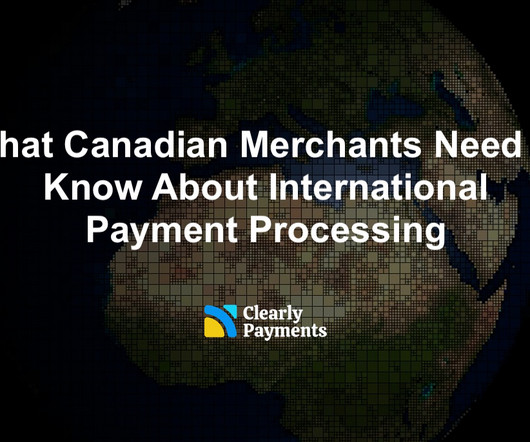Report on SME Cross-Border Payment Challenges and Their Impact on Sustainable Development in Latin America
Executive Summary
A new report from Mastercard, developed in collaboration with Payments and Commerce Market Intelligence (PCMI) and K2, reveals that Small and Medium-sized Enterprises (SMEs) in Latin America are poised for global expansion but are hindered by an international payment system designed for large corporations. These systemic inefficiencies create significant barriers to growth, directly impacting the region’s progress towards key Sustainable Development Goals (SDGs). The report identifies disproportionate costs, processing delays, and a lack of payment visibility as primary obstacles, underscoring the need for a structural redesign of financial infrastructure to enhance SME inclusion and global competitiveness.
Key Findings: Barriers to SME Growth and Economic Inclusion
The research highlights a critical disconnect between the ambitions of Latin American SMEs and the capabilities of the current cross-border payment ecosystem. This gap presents a substantial threat to regional economic stability and growth.
- High Propensity for Global Trade: Three out of five SMEs in the region already engage with international suppliers. In key markets like Mexico and Brazil, 75% of SMEs intend to expand their global partnerships.
- Prohibitive Transaction Costs: SMEs face excessive fees that stifle their ability to compete. A cross-border payment of just $250 can incur average fees of 23.3%, with rates reaching as high as 30% in some corridors.
- Operational Inefficiencies and Delays: The payment process is slow and unreliable, leading to potential supply chain disruptions. In Brazil, 80% of international payments require more than four days to settle, and 20% take longer than ten days.
- Economic Significance: These challenges affect a vital segment of the economy, as SMEs constitute 98% of all businesses and are responsible for 60% of employment in Latin America.
Alignment with Sustainable Development Goals (SDGs)
The challenges faced by SMEs directly impede the achievement of several UN Sustainable Development Goals. Addressing these payment inefficiencies is crucial for fostering inclusive and sustainable development.
- SDG 8: Decent Work and Economic Growth: By constraining the growth of SMEs, which are the primary drivers of employment, the current payment system limits the creation of decent work and hampers sustained, inclusive economic growth.
- SDG 9: Industry, Innovation, and Infrastructure: The report calls for an overhaul of financial infrastructure to be more inclusive and resilient. Modernizing payment systems for SMEs is a direct investment in the innovative infrastructure needed to support sustainable industrialization.
- SDG 10: Reduced Inequalities: The disproportionate costs and barriers faced by SMEs compared to large corporations represent a significant economic inequality. Creating a more equitable payment framework is essential for reducing these disparities and providing SMEs with a fair opportunity to participate in the global market.
- SDG 17: Partnerships for the Goals: The report itself, a collaboration between Mastercard, PCMI, and K2, exemplifies the multi-stakeholder partnerships needed to address complex development challenges. The proposed solutions rely on continued partnership between technology providers and financial institutions to achieve these goals.
Proposed Solutions: Modernizing Financial Infrastructure with Mastercard Move
Mastercard is addressing these challenges through its Mastercard Move portfolio, a suite of money movement capabilities designed to reform the international payment experience for SMEs and align with sustainable development principles.
Benefits of the Proposed Solution:
- Cost Efficiency: Reduces the number of intermediaries and eliminates hidden fees, making cross-border trade more financially viable for SMEs and contributing to SDG 8.
- Transparency and Traceability: Provides real-time visibility into costs and delivery times, building trust and improving operational planning for small businesses, in line with the principles of resilient infrastructure (SDG 9).
- Accelerated Settlement: Enables faster payments, including same-day or real-time settlement in over 150 markets, which improves SME liquidity and agility.
As stated by Walter Pimenta, Executive Vice President at Mastercard, “We are reimagining how international payments should work for SMEs: simply, securely, and adapted to their realities… Today’s SMEs are tomorrow’s multinationals. And together, we can build the infrastructure they deserve.”
Research Methodology
The report’s findings are based on comprehensive research conducted between January and March 2025, comprising three components:
- Cost & Service Assessment: A transactional study by K2 that tracked 70 payments across multiple countries to evaluate costs, fees, and processing times.
- Stakeholder Interviews: In-depth interviews with 36 key players, including 18 SMEs and 14 financial institutions, to understand pain points and potential solutions.
- Data Review: An analysis of public data on the challenges SMEs face in cross-border payments.
Analysis of SDGs, Targets, and Indicators
1. Which SDGs are addressed or connected to the issues highlighted in the article?
-
SDG 8: Decent Work and Economic Growth
The article focuses on Small and Medium-sized Enterprises (SMEs), which are described as the “silent engine of Latin America” and are responsible for “98% of the business fabric and 60% of employment in the region.” The challenges they face with cross-border payments directly hinder their growth, competitiveness, and ability to create and sustain employment, which are central themes of SDG 8.
-
SDG 9: Industry, Innovation, and Infrastructure
The core issue discussed is the inadequacy of the “current international payment system,” which is a critical piece of financial infrastructure. The article calls for a “structural redesign” and highlights the need to “modernize the payment infrastructure in Latin America.” Mastercard’s proposed solution, “Mastercard Move,” is a technological innovation aimed at creating a more resilient and efficient infrastructure for SMEs.
-
SDG 10: Reduced Inequalities
The article points out that SMEs face “disproportionate costs, delays, and lack of visibility” compared to large corporations. This highlights an inequality in access to efficient financial services. The report’s goal is to “boost SMEs’ inclusion and global competitiveness,” directly addressing the need to reduce inequalities within and among countries by ensuring smaller enterprises are not left behind.
-
SDG 17: Partnerships for the Goals
The initiative described is built on collaboration. The report was “developed in collaboration with Payments and Commerce Market Intelligence (PCMI) and K2.” Furthermore, Mastercard’s strategy involves “working with financial institutions to modernize the payment infrastructure.” This multi-stakeholder approach to solving a systemic problem is the essence of SDG 17.
2. What specific targets under those SDGs can be identified based on the article’s content?
-
Target 8.3: Promote development-oriented policies that support productive activities, decent job creation, entrepreneurship, creativity and innovation, and encourage the formalization and growth of micro-, small- and medium-sized enterprises, including through access to financial services.
The article is entirely focused on unlocking the potential of SMEs by improving their access to a crucial financial service: efficient international payments. It states that to reach their potential, SMEs “need a financial infrastructure that accompanies them on their global journey,” directly linking their growth and productivity to access to financial services.
-
Target 9.3: Increase the access of small-scale industrial and other enterprises, in particular in developing countries, to financial services… and their integration into value chains and markets.
The article highlights that “3 out of 5 SMEs in the region already work with international suppliers” and “75% plan to expand their global partnerships.” The high costs and delays in payments are a direct barrier to their access to financial services and their ability to integrate into global value chains and markets.
-
Target 10.c: By 2030, reduce to less than 3 per cent the transaction costs of migrant remittances and eliminate remittance corridors with costs higher than 5 per cent.
Although the article discusses B2B payments and not remittances, the principle is directly applicable. The article provides a stark example of excessive transaction costs: “Sending just $250 can involve average fees of 23.3%, reaching up to 30%.” The goal of Mastercard Move to create “more cost-efficient payments, by reducing intermediaries and hidden fees” aligns with the spirit of this target to drastically reduce transaction costs.
-
Target 17.17: Encourage and promote effective public, public-private and civil society partnerships…
The research and the proposed solution are products of partnership. The report was a collaboration between “Mastercard… PCMI… and K2.” The implementation strategy involves Mastercard “working with financial institutions.” This demonstrates a multi-stakeholder partnership aimed at achieving a development goal.
3. Are there any indicators mentioned or implied in the article that can be used to measure progress towards the identified targets?
-
Cost of Cross-Border Transactions
The article explicitly mentions a key indicator of the problem: “average fees of 23.3%, reaching up to 30%” for a $250 transaction. Progress towards Target 10.c can be measured by tracking the reduction of these fees over time.
-
Payment Processing Time
An indicator for infrastructure inefficiency (related to Target 9.3) is provided: “in Brazil, 80% of payments take more than 4 days, and 1 in 5 take more than 10 days.” A measure of success for the new infrastructure would be a significant reduction in these settlement times, moving towards the goal of “same-day or real-time” payments.
-
SME Integration in Global Markets
The article provides baseline indicators for SME global integration (related to Target 8.3 and 9.3): “3 out of 5 SMEs in the region already work with international suppliers,” and in some markets, “75% plan to expand their global partnerships.” An increase in the proportion of SMEs engaging in cross-border trade would indicate progress.
-
Transparency and Traceability
The article mentions a “lack of visibility of international payments” as a key problem. The proposed solution offers “total transparency, with real-time traceability of costs and delivery times.” The availability and use of such tracking features can serve as an indicator of improved financial services for SMEs.
4. Create a table with three columns titled ‘SDGs, Targets and Indicators” to present the findings from analyzing the article.
| SDGs | Targets | Indicators |
|---|---|---|
| SDG 8: Decent Work and Economic Growth | 8.3: Encourage the growth of micro-, small- and medium-sized enterprises, including through access to financial services. |
|
| SDG 9: Industry, Innovation, and Infrastructure | 9.3: Increase the access of small-scale enterprises to financial services and their integration into value chains and markets. |
|
| SDG 10: Reduced Inequalities | 10.c: Reduce transaction costs of remittances (principle applied to B2B payments). |
|
| SDG 17: Partnerships for the Goals | 17.17: Encourage and promote effective public-private and civil society partnerships. |
|
Source: theglobeandmail.com







